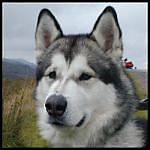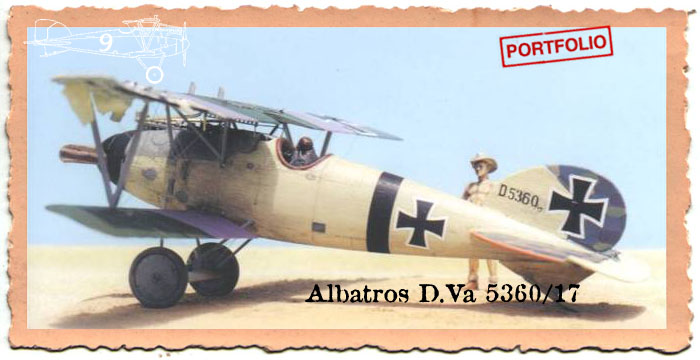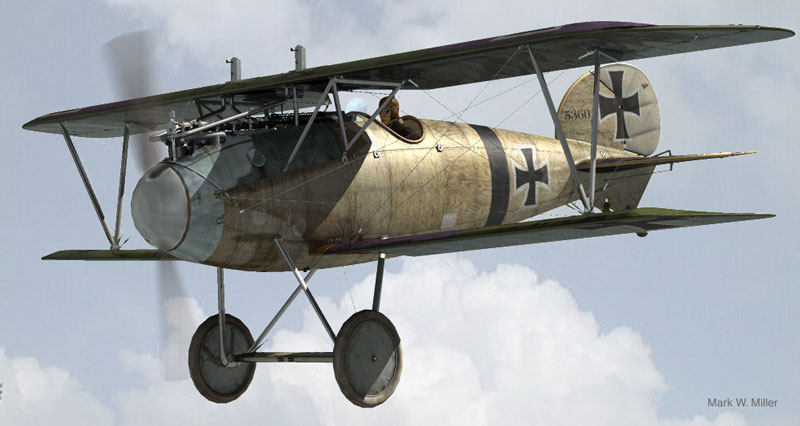
". . .Heinz Nowarra identified this aircraft as belonging to Jasta 2(F) (Jasta 300).
We know now by the time this photograph was taken whatever Jasta number you used was irrelevant as the Jasta had been reduced in strength to where it's small numbers made it totally in-effect. This aircraft, Albatros D.Va 7416/17 was photographed along with D.5359/17 when the British captured them on the airfield occupied by Fl. Abt. 304. They might have represented a major portion of Jasta 1(F) operational capabilities.
This tropical Albatros D.Va came from the third production batch and probably led quite an interesting existence. A number of times the Jasta was down to one or two airplanes, the rest lost through attrition and combat. That an aircraft carrying the national markings of March/April 1918 must have meant this aircraft was around from nearly the beginning. It wore 5-colour lozenge on its wings and horizontal stabilizer. Probably dark day on top /light day on the bottom with salmon pink rib tapes. All metal parts, spinner, all struts, and wheel centre's probably in typical Albatros light grey-green
The fuselage is depicted in natural wood with a centreline horizontal tri-stripe believed to be white /black/white. Note how the tri-stripe wraps around the spinner. The fuselage hakenkreuz appears lighter in the photographs than the centre band of the centreline tri-stripe but is still a dark colour. It might be blue, dark green, dark grey or as I have asked Mark to depict it as red. I have wondered if the same pilot who applied centreline tri-stripe applied the hakenkreuz. If not, then who applied the centre tri-line marking? Could it have been an attempt at a jasta mark? Most likely not, since this Jasta was the only German fighter unit in this theatre. How about another pilot's personal marking? But who marking could it be The swastika has been associated with the Jasta 300 pilot Hermann Kunz who is known to have used the hakenkreuz as a personal mark during his stay with Jasta 7. Hauptman Franz Walz has also been identified as the pilot of this aircraft. I have often wondered if an officer, who wasn't successful as a Jasta leader in France, would be more concerned as commander that his units were well supplied in this logistical nightmare than his participation in combat. I would think someone more aggressive in the air such as the squadron leader Flecken flying a conspicuous marked aircraft or as I mentioned above Kunz.
There is a small painted number "5 " on the fuselage tri- stripe which has been depicted in the same colour as the Hakenkreuz. Why the small number "5"? . Did this Jasta once number it's aircraft with individual numbers and this is the last survivor of that group? The serial number is unusual because of the abbreviation "Alb." for Albatros above the number 7416/17. The rudder is clear doped with the Albatros factory decal present. . ."
































